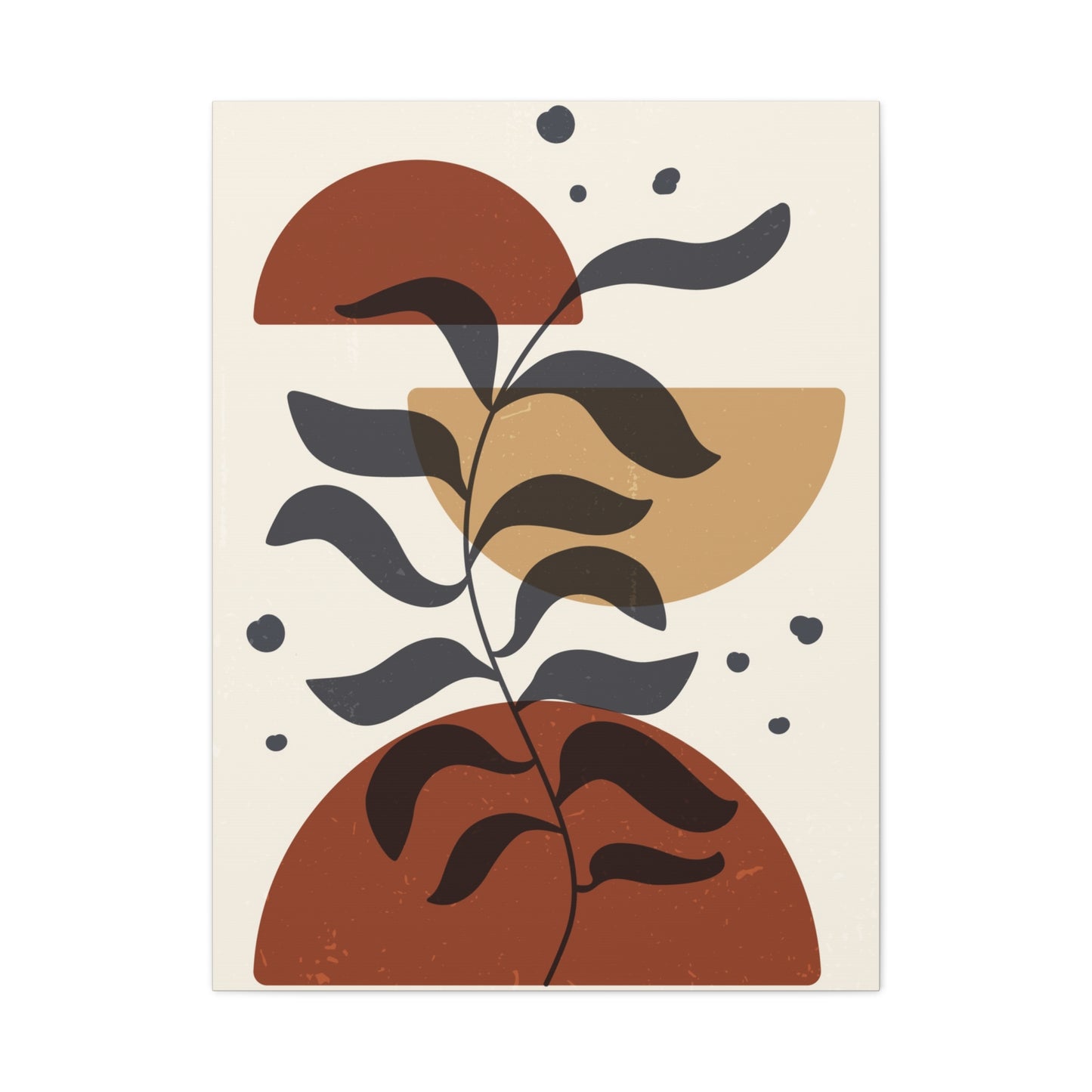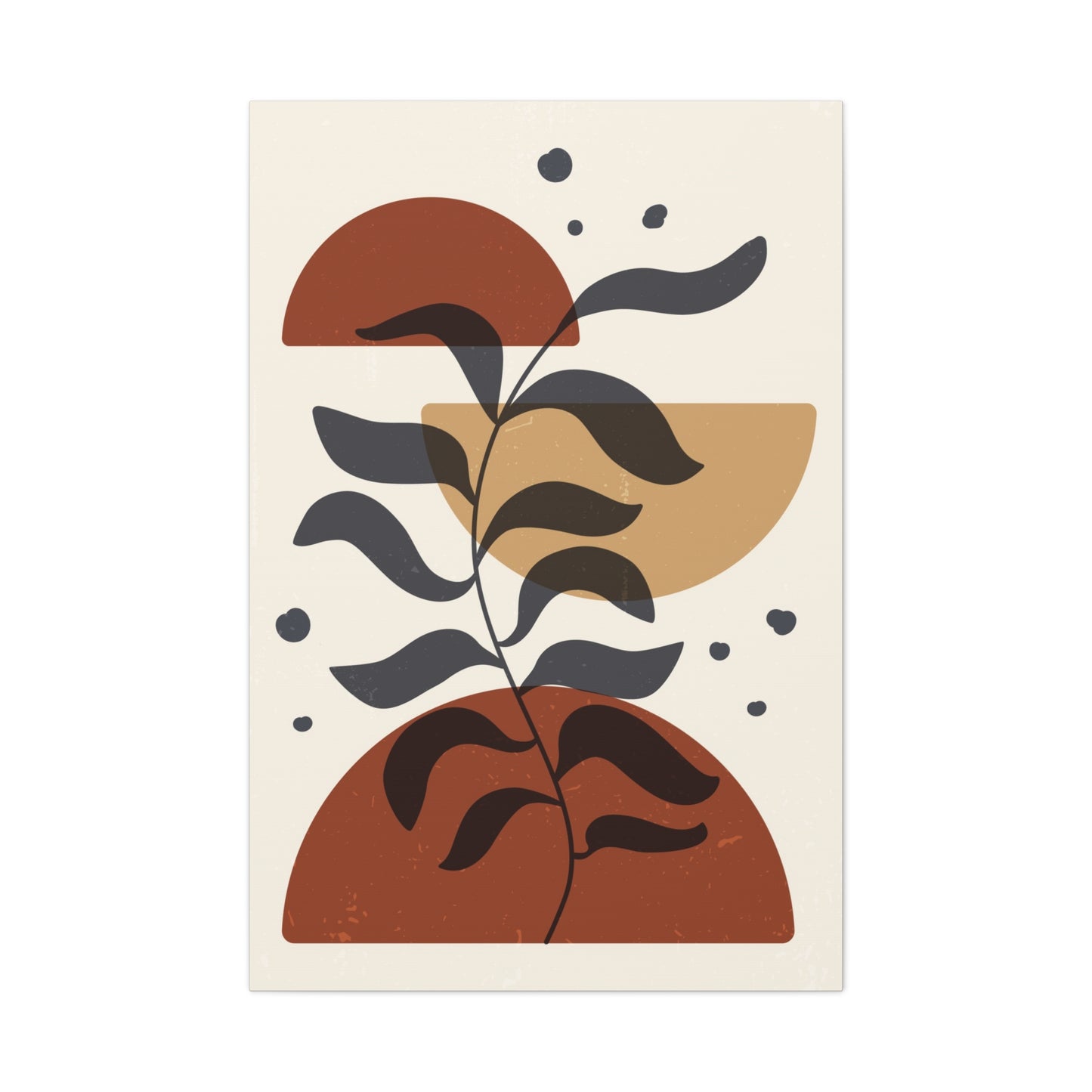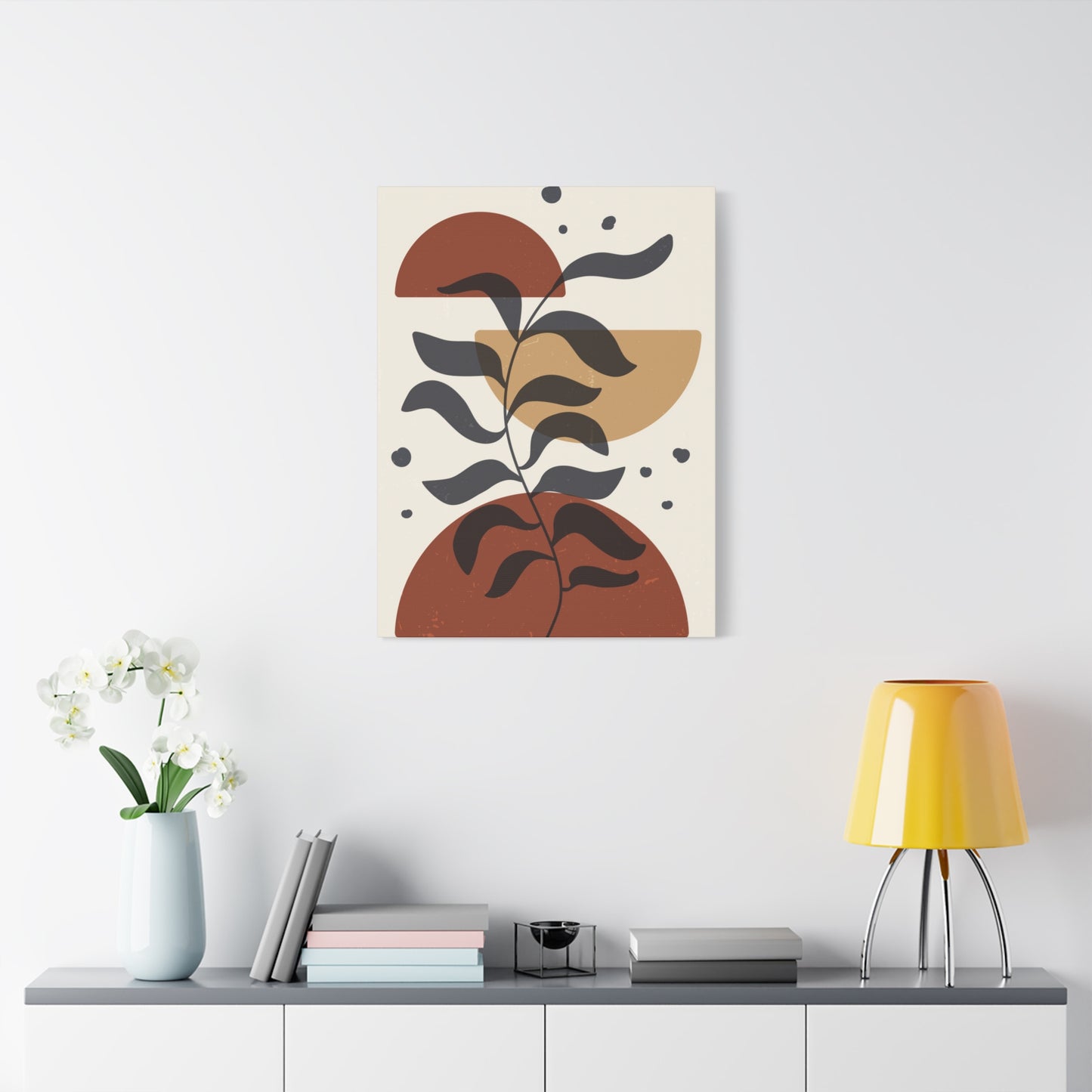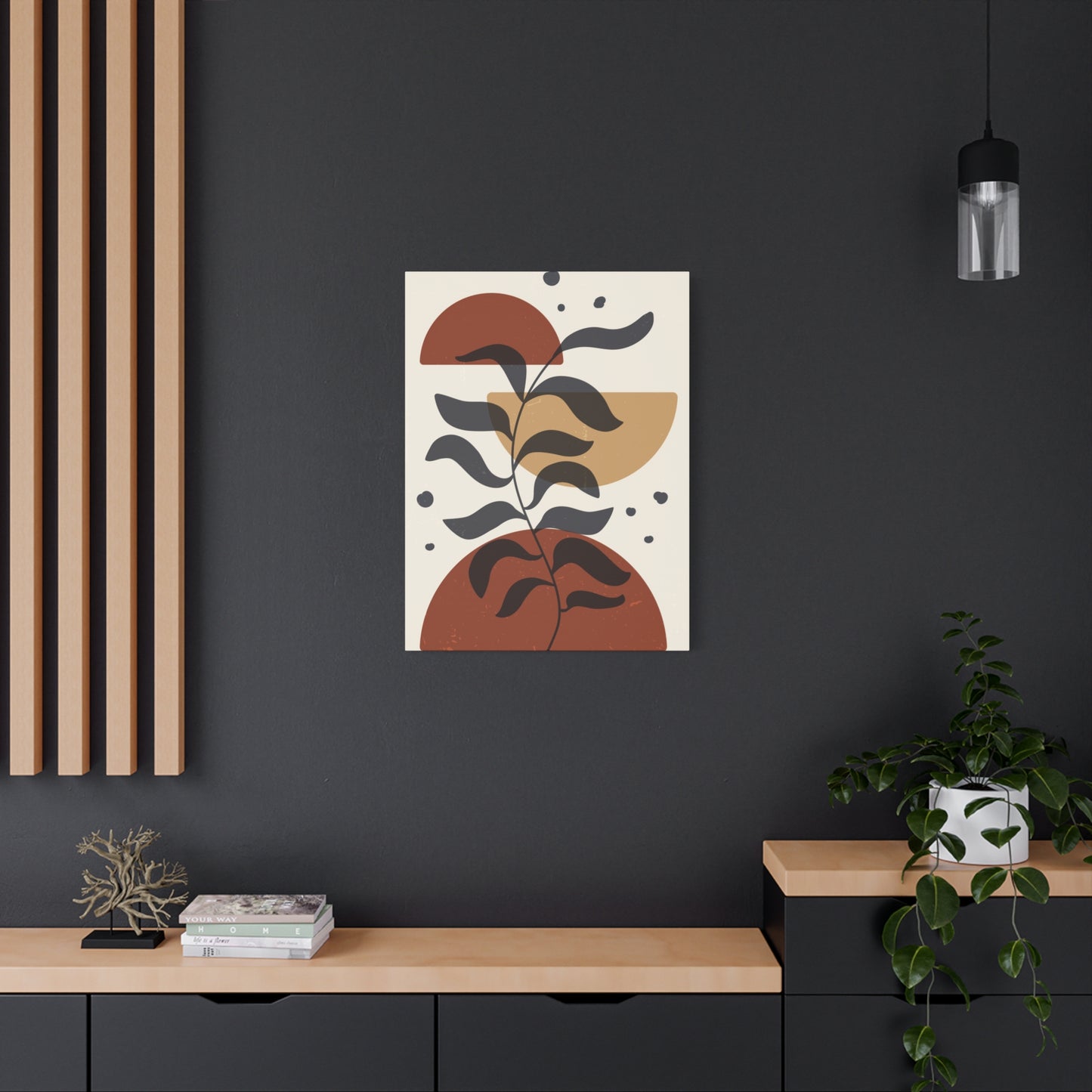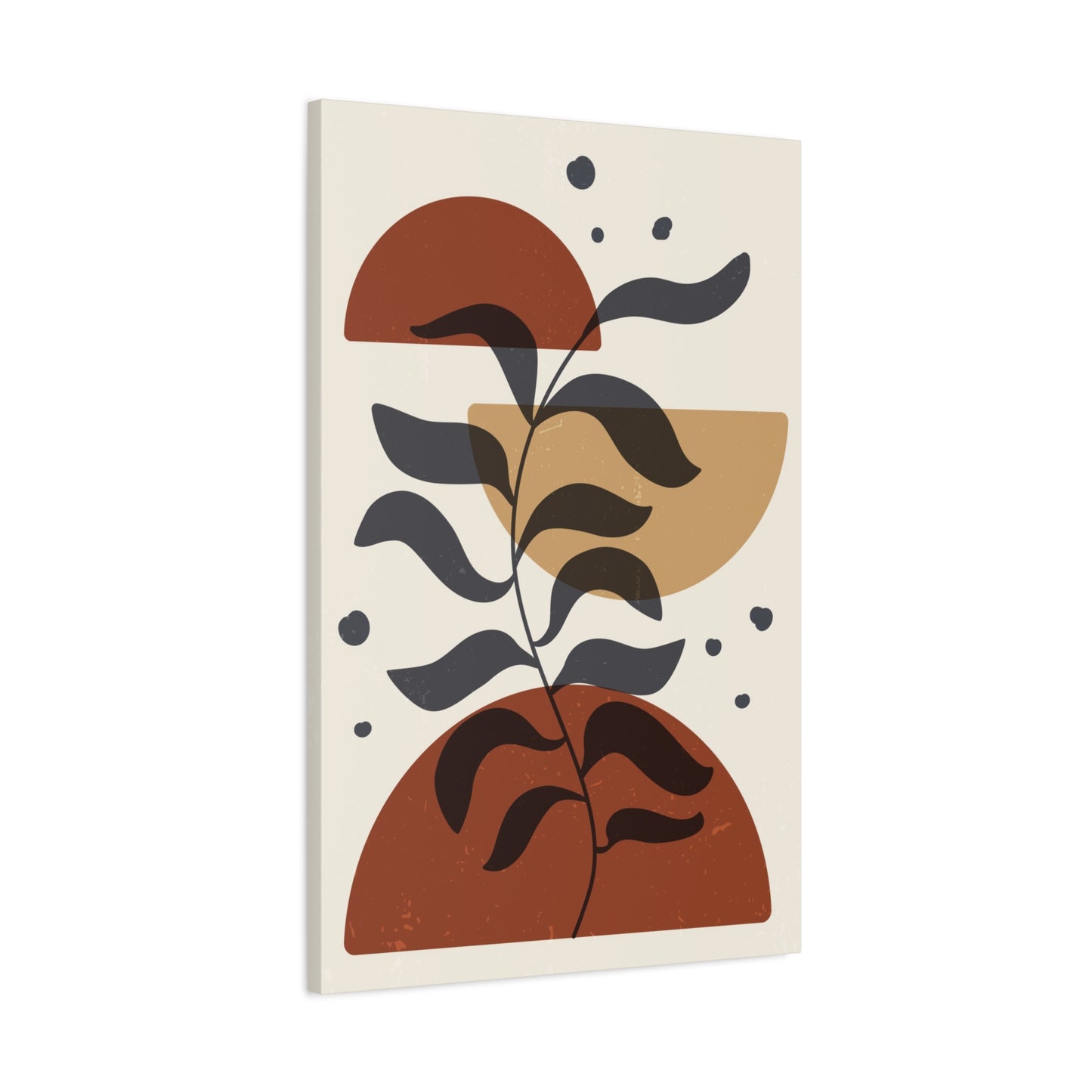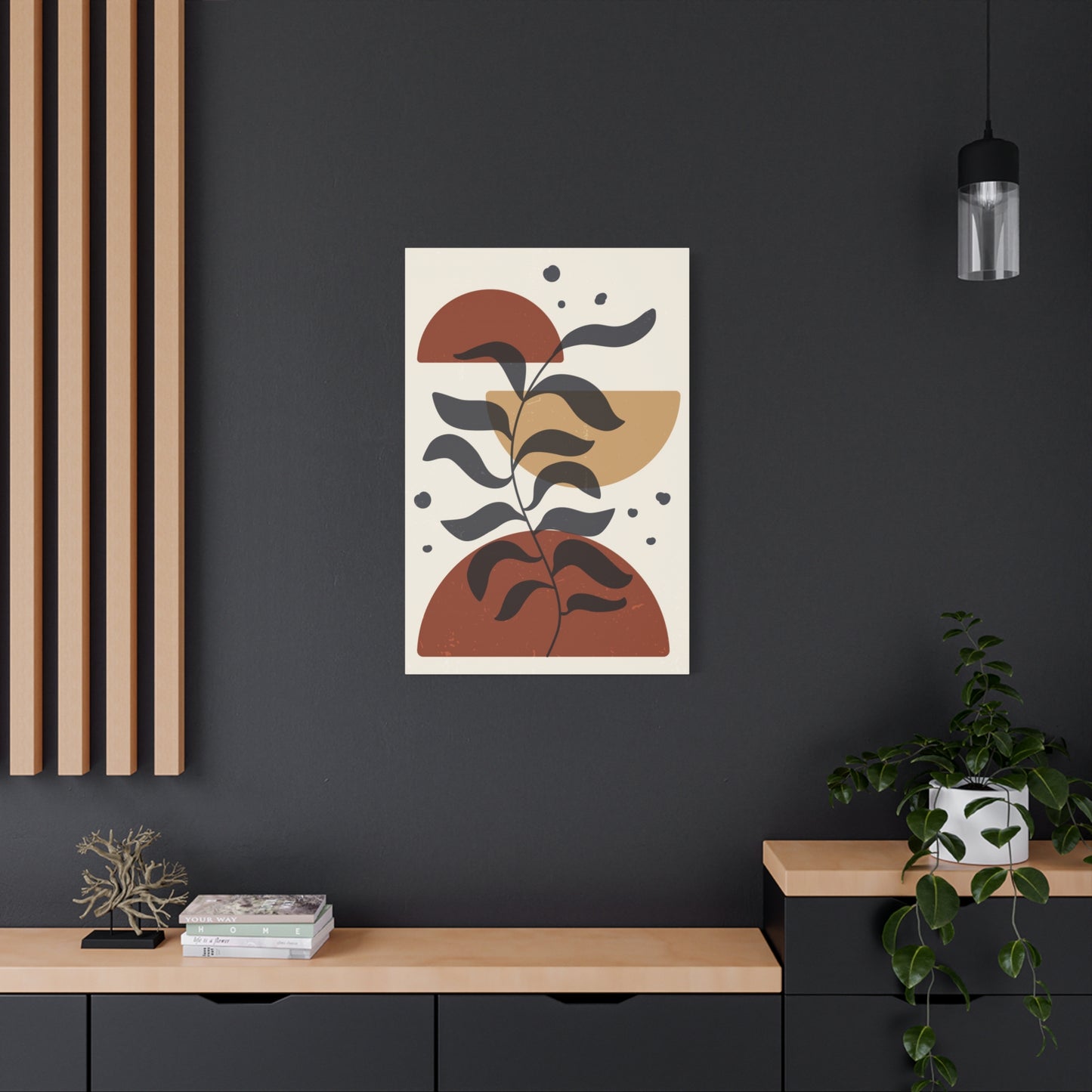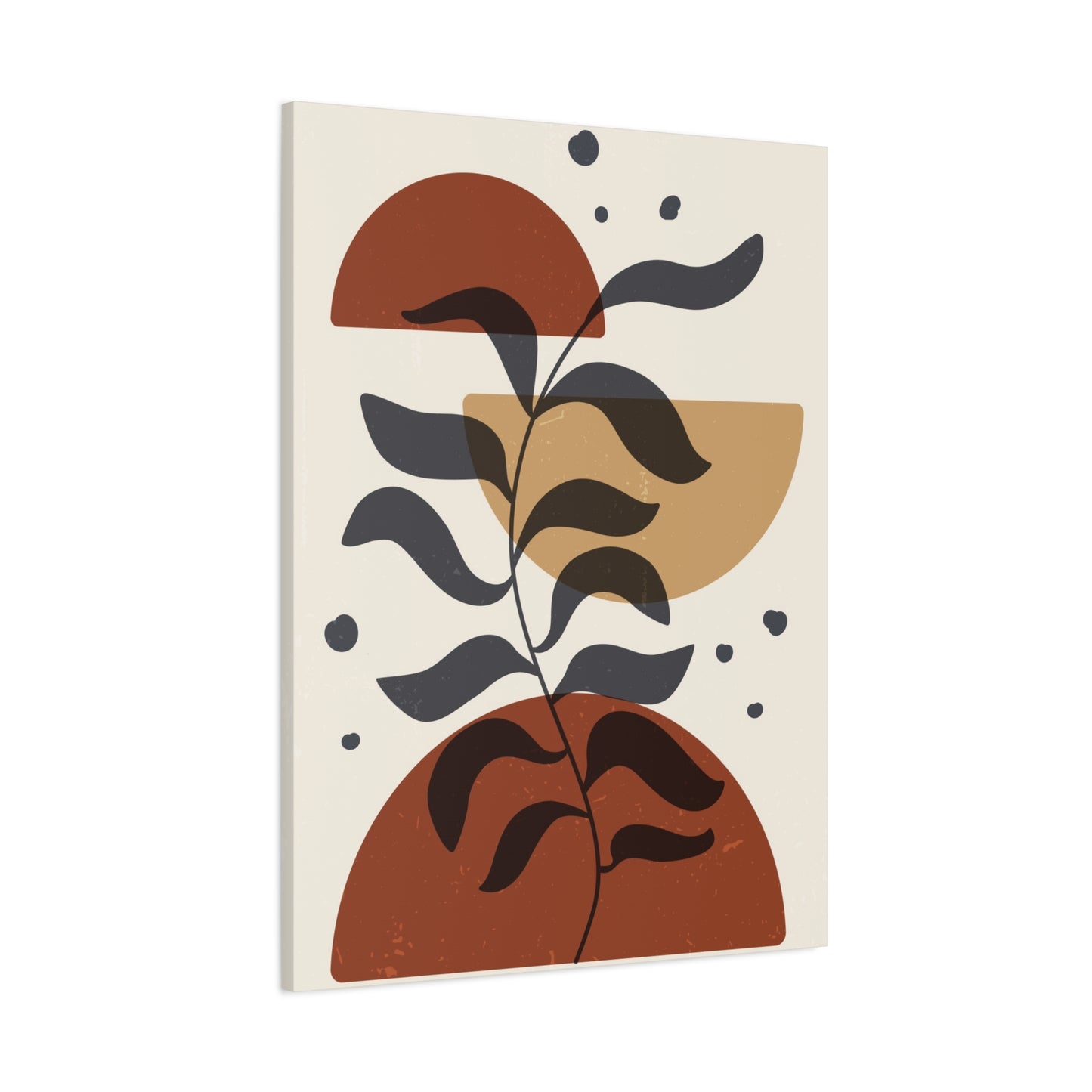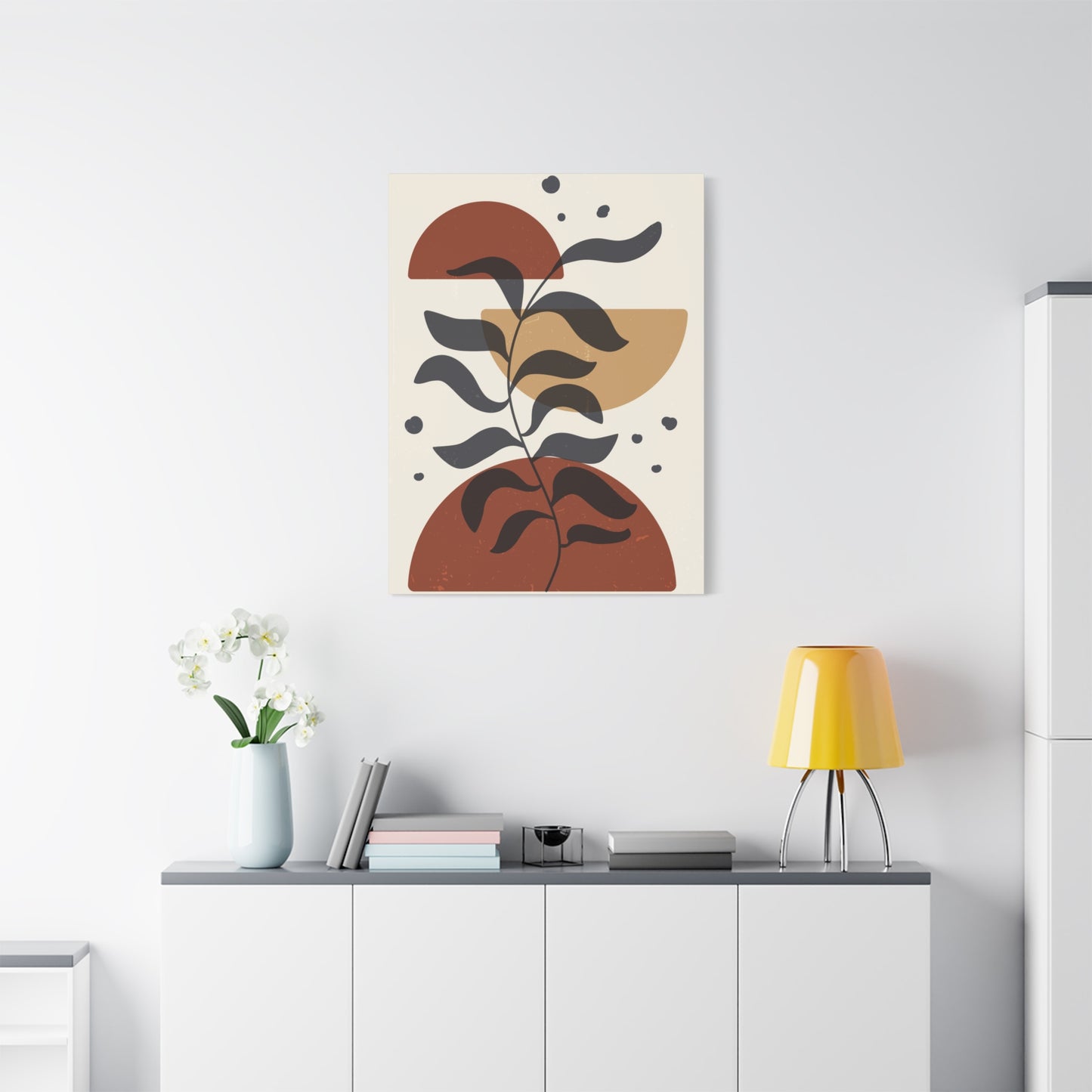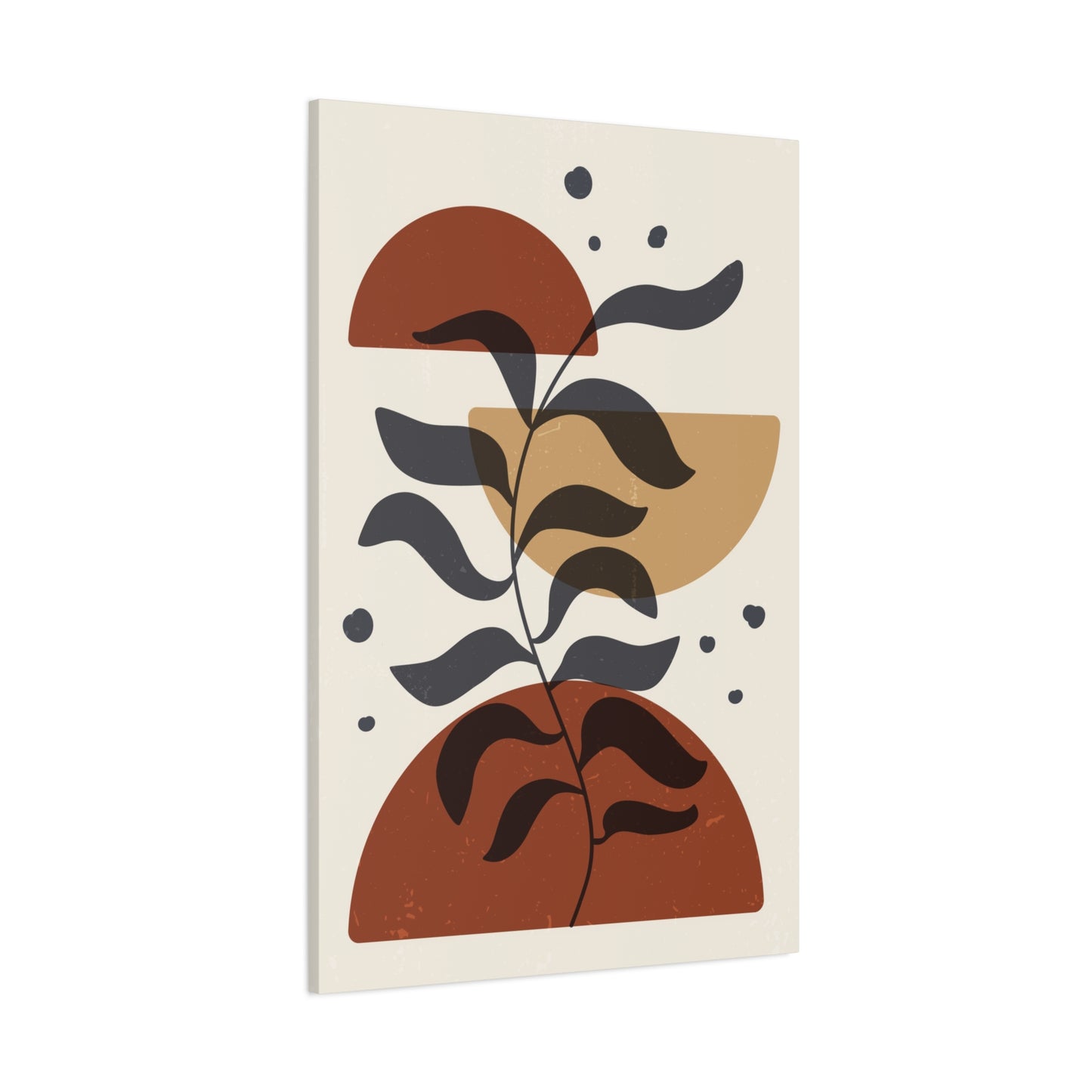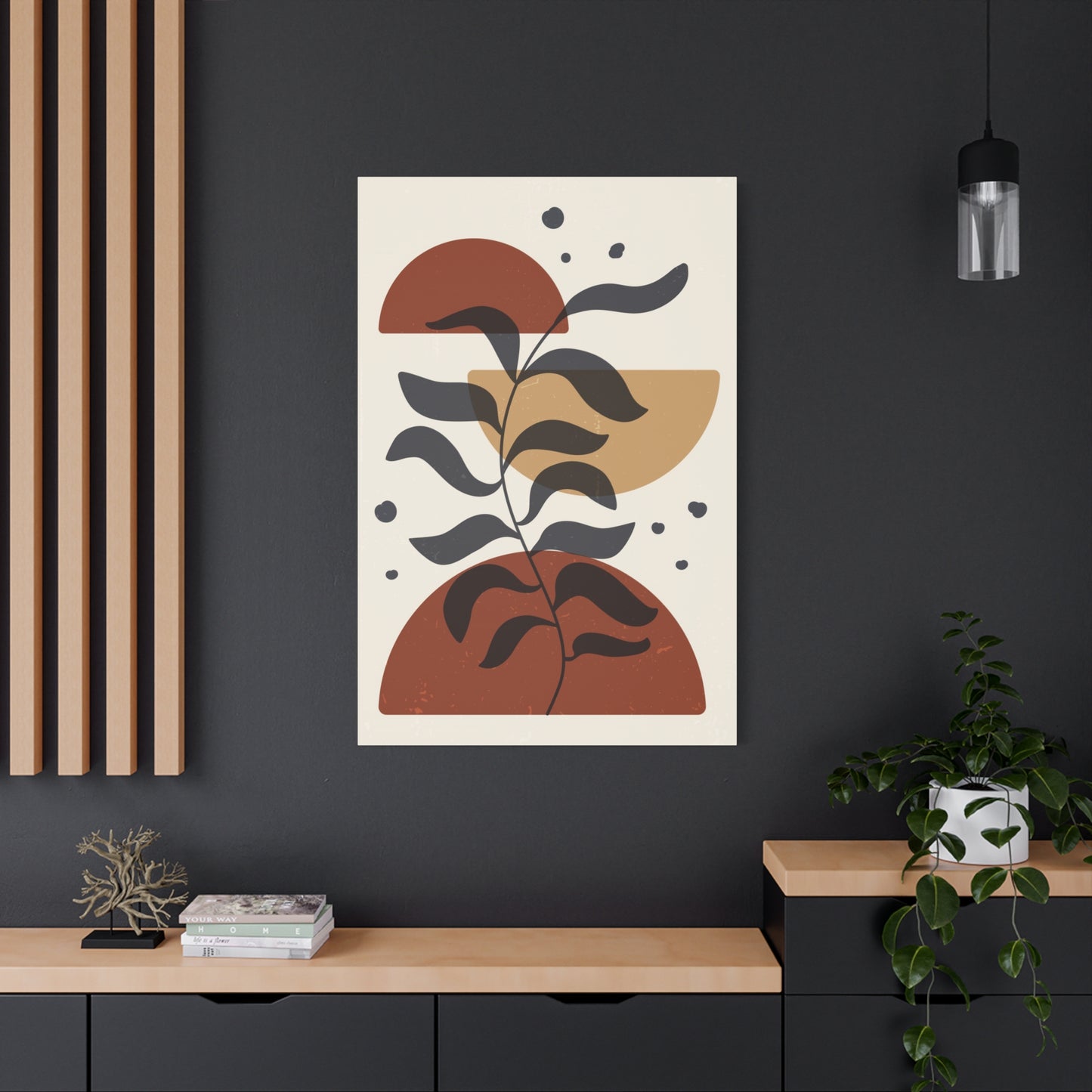Geometry Meets the Wild: Capturing Natural Forms in Earth-Toned Wall Art
Interior design trends have shifted dramatically toward incorporating natural elements into living spaces. Branch and geometry earth tones wall art canvas prints represent a perfect fusion of organic beauty and contemporary design principles. These artistic pieces bring warmth, sophistication, and a connection to nature that resonates with homeowners seeking to create calming, aesthetically pleasing environments.
The appeal of earth tones has grown exponentially as people recognize the psychological benefits of surrounding themselves with colors reminiscent of natural landscapes. Terracotta reds, deep ochres, warm browns, soft taupes, and muted greens create an atmosphere of tranquility and groundedness. When combined with geometric patterns and branch motifs, these colors transform ordinary walls into captivating focal points that tell a story of nature's elegance meeting human creativity.
Canvas prints featuring these elements have become increasingly accessible, allowing homeowners to achieve gallery-quality aesthetics without the prohibitive costs associated with original artwork. The versatility of these prints makes them suitable for various interior design styles, from minimalist Scandinavian to rustic farmhouse, from bohemian eclectic to modern industrial. This adaptability ensures that branch and geometry earth tones wall art canvas prints remain relevant across changing design trends while maintaining their timeless appeal.
How Earth Tone Color Palettes Create Harmonious Living Spaces
Earth tone color schemes draw inspiration directly from the natural world around us. These hues include the rich browns of fertile soil, the golden yellows of autumn leaves, the deep greens of forest canopies, and the soft grays of river stones. When incorporated into wall art, these colors create a visual language that speaks to our inherent connection with nature, promoting feelings of stability, comfort, and peace.
The psychological impact of earth tones cannot be overstated. Research in color psychology demonstrates that warm, natural colors reduce stress levels and create environments conducive to relaxation and contemplation. Unlike bold, vibrant colors that energize and stimulate, earth tones provide a backdrop that allows the mind to rest and rejuvenate. This makes them particularly suitable for bedrooms, living rooms, and spaces designed for unwinding after demanding days.
Branch and geometry earth tones wall art canvas prints leverage this color psychology by presenting organic shapes and patterns in these calming hues. The repetition of natural forms creates visual rhythm, while geometric elements add structure and contemporary appeal. This balance between organic and structured design elements ensures that the artwork feels both modern and timeless, sophisticated yet approachable.
Interior designers frequently recommend earth tone palettes for clients seeking cohesive, harmonious spaces. These colors work exceptionally well together, making it nearly impossible to create jarring color combinations. Whether you select prints featuring predominantly brown tones with hints of green, or pieces that emphasize terracotta and ochre with subtle gray accents, the result will integrate seamlessly with existing decor. This forgiving nature makes earth tone canvas prints an excellent choice for those who may feel uncertain about their color coordination abilities.
Branch Motifs in Contemporary Wall Art Design
Branch imagery has emerged as one of the most popular motifs in contemporary wall art. The appeal of branches lies in their inherent beauty and symbolic significance. Branches represent growth, connection, and the intricate networks that sustain life. Their organic, irregular forms provide visual interest that geometric shapes alone cannot achieve, creating artwork that feels alive and dynamic.
Artists interpreting branch motifs for canvas prints employ various stylistic approaches. Some create highly realistic depictions that showcase the intricate details of bark texture, the delicate structure of twigs, and the subtle variations in color that occur naturally. These realistic representations bring the beauty of nature directly into the home, serving as windows to forest scenes and natural landscapes.
Other artists take a more abstract approach, simplifying branch forms into essential lines and shapes that suggest rather than explicitly depict their natural counterparts. These minimalist interpretations align perfectly with modern design sensibilities, offering the essence of nature without overwhelming the visual field. The simplified forms allow viewers to project their own experiences and emotions onto the artwork, creating a personal connection that grows deeper over time.
Branch and geometry earth tones wall art canvas prints often combine both realistic and abstract elements, creating layered compositions that reward extended viewing. A print might feature highly detailed branch silhouettes in the foreground while incorporating geometric patterns or simplified organic shapes in the background. This layering creates depth and complexity, ensuring the artwork maintains visual interest rather than becoming mere background decoration.
The placement of branch motifs within compositions also contributes to their impact. Vertical arrangements create a sense of upward growth and aspiration, suitable for spaces where you want to foster motivation and forward movement. Horizontal branch arrangements suggest stability and groundedness, perfect for creating calming atmospheres in bedrooms and meditation spaces. Diagonal orientations introduce dynamic energy, ideal for adding visual movement to otherwise static rooms.
Geometric Patterns and Their Role in Natural-Themed Artwork
Geometry provides structure and order to the organic chaos of nature. When geometric patterns appear alongside branch motifs in earth tone wall art, they create fascinating visual dialogues between the planned and the spontaneous, the mathematical and the intuitive. This interplay resonates with viewers on both intellectual and emotional levels, satisfying our human desire for pattern recognition while celebrating nature's beautiful unpredictability.
Sacred geometry, which includes patterns like the flower of life, metatron's cube, and golden ratio spirals, appears frequently in nature-inspired artwork. These patterns, found throughout the natural world in flower petals, shell spirals, and tree growth patterns, suggest an underlying order to creation. Incorporating these geometric forms into branch-themed canvas prints adds layers of meaning, transforming decorative pieces into contemplative artworks that invite meditation and reflection.
Simple geometric shapes like circles, triangles, and hexagons also enhance branch motifs effectively. A circular frame can draw the eye to a central branch arrangement, creating a focal point that anchors the entire composition. Triangular elements introduce stability and balance, while hexagonal patterns echo the efficiency and beauty found in honeycombs and crystal structures. These shapes, rendered in earth tones, maintain the natural feel while adding contemporary sophistication.
The sizing and repetition of geometric elements significantly influence the overall effect of the artwork. Large, bold geometric shapes create dramatic statements suitable for spacious walls in living rooms or entryways. Smaller, repeated patterns generate visual texture that adds interest without overwhelming the space, working beautifully in more intimate settings like reading nooks or home offices. The scale of geometric elements relative to branch motifs determines whether the piece feels more organic or more structured, allowing for fine-tuned aesthetic control.
Geometric patterns in earth tones possess remarkable versatility in coordinating with various design styles. In minimalist interiors, clean geometric forms complement sparse furnishings and negative space. In maximalist spaces, complex geometric patterns add to the visual richness without creating discord. Mid-century modern rooms benefit from the retro-geometric aesthetic that dominated that era, while contemporary spaces appreciate the mathematical precision and artistic interpretation of form.
Canvas Print Quality and Material Considerations
The quality of canvas prints significantly impacts both the visual appeal and longevity of your wall art. High-quality canvas materials provide superior texture, color retention, and durability compared to cheaper alternatives. When selecting branch and geometry earth tones wall art canvas prints, understanding material differences helps ensure your investment remains beautiful for years.
Premium canvas typically consists of cotton or polyester blends, with cotton offering superior texture and archival qualities. The weave density of the canvas affects how the printed image appears; tighter weaves produce sharper images with finer details, while looser weaves create more texture and a traditional canvas appearance. For branch and geometry artwork where detail matters, a tighter weave generally produces better results, though artistic style should guide this choice.
The coating applied to canvas before printing determines how inks adhere and how colors appear. Quality canvas prints use specially formulated coatings that prevent ink absorption, ensuring colors remain vibrant and true to the original design. These coatings also provide protection against fading caused by UV exposure, moisture, and environmental pollutants. When shopping for earth tone canvas prints, inquire about UV protection and archival quality inks, which maintain color integrity over decades rather than years.
Printing technology dramatically influences the final appearance of canvas artwork. Giclée printing, which uses high-resolution inkjet technology with archival-quality inks, produces museum-quality reproductions with exceptional color accuracy and tonal range. This printing method excels at reproducing the subtle color variations and gradients characteristic of earth tone palettes. The superior quality justifies the higher cost for those seeking investment-quality wall art that will remain beautiful indefinitely.
Canvas stretching and mounting methods also deserve consideration. Gallery-wrapped canvases extend the printed image around the edges of the wooden frame, creating a finished appearance that requires no additional framing. This modern presentation style works exceptionally well with branch and geometry designs, allowing the artwork to stand independently as three-dimensional objects. The depth of the stretcher bars, typically ranging from three-quarters of an inch to two inches, affects the visual impact, with deeper frames creating more dramatic shadow effects.
Sizing and Placement Strategies for Maximum Visual Impact
Selecting the appropriate size for wall art involves more than measuring available space. The relationship between artwork dimensions and surrounding architectural elements determines whether pieces feel integrated or awkwardly placed. Branch and geometry earth tones wall art canvas prints come in various sizes, from small accent pieces to oversized statement installations, each serving different design purposes.
For walls above sofas or beds, designers recommend artwork spanning sixty to seventy-five percent of the furniture width. This proportion creates visual balance without overwhelming the furniture or appearing too small to make an impact. A seventy-two-inch-wide sofa, for example, pairs beautifully with a single large canvas measuring forty-five to fifty-four inches wide, or a grouping of smaller canvases spanning that total width. This sizing ensures the artwork anchors the furniture while maintaining harmonious proportions.
Ceiling height significantly influences optimal artwork size and placement. Standard eight-foot ceilings accommodate artwork centered approximately sixty inches from the floor to the center of the piece, placing it at average eye level for standing viewers. Rooms with higher ceilings allow for larger artwork and higher placement, while maintaining the principle that the center should align with the natural eye level for the space's primary function. Dining rooms might position artwork slightly higher to account for seated viewing, while hallways benefit from lower placement for comfortable viewing while walking.
Creating gallery walls with multiple canvas prints allows for creative expression while maximizing visual impact. When arranging branch and geometry earth tones pieces in groupings, consider using odd numbers of canvases, as arrangements of three, five, or seven pieces typically feel more dynamic and visually interesting than even numbers. Maintain consistent spacing between pieces, usually two to three inches, to create cohesion while allowing each work to maintain its individual identity within the larger composition.
Single large-scale canvas prints make bold statements suitable for spacious walls in open-concept living areas, above fireplaces, or in entryways where they immediately establish the home's aesthetic character. These substantial pieces work particularly well with branch motifs that benefit from expansive presentation, allowing the organic forms to flow naturally across the canvas without appearing cramped or constrained. The scale creates drama and serves as an immediate conversation starter for guests.
Color Coordination with Existing Interior Design Elements
Successfully integrating branch and geometry earth tones wall art canvas prints into existing spaces requires thoughtful consideration of current color schemes, furniture styles, and decorative accessories. Earth tones offer remarkable flexibility, but strategic coordination elevates results from merely acceptable to genuinely stunning.
Begin by identifying the dominant colors in your existing space, including wall paint, major furniture pieces, and flooring materials. Earth tone canvas prints work beautifully as complementary elements that harmonize with existing neutrals. If your room features predominantly cool grays and whites, select prints emphasizing warmer earth tones like terracotta, rust, and golden ochre to introduce warmth without creating stark contrast. Conversely, spaces dominated by warm beiges and creams benefit from prints incorporating cooler earth tones like sage green, charcoal gray, and slate blue.
The principle of creating color bridges helps artwork feel integrated rather than added as an afterthought. Select canvas prints that contain at least one color already present in the room, whether in throw pillows, area rugs, or decorative objects. This shared color creates visual connections that unify the space. For instance, if your room includes terracotta pottery or rust-colored accent pillows, choosing wall art featuring similar tones establishes cohesion while the other colors in the print introduce new elements without disrupting harmony.
Consider the room's lighting when selecting earth tone prints, as natural and artificial light dramatically affect how colors appear. North-facing rooms receive cooler, more indirect light that can make spaces feel shadowy; warmer earth tones in wall art compensate by introducing perceived warmth. South-facing rooms enjoy abundant warm light throughout the day, allowing for greater flexibility in color selection. East and west-facing rooms experience dramatic lighting changes between morning and evening, making it important to view potential prints at different times before committing.
Texture coordination complements color coordination in creating cohesive interiors. Earth tone canvas prints naturally introduce texture through the canvas weave and printing techniques. Enhance this textural interest by incorporating complementary materials throughout the space. Woven baskets, wooden furniture, linen upholstery, and natural fiber rugs all share the organic aesthetic of branch and geometry artwork, creating layered, tactile environments that engage multiple senses.
Creating Focal Points in Minimalist Interior Design
Minimalist design philosophy emphasizes simplicity, functionality, and intentional selection of every element within a space. In this context, branch and geometry earth tones wall art canvas prints serve as carefully chosen focal points that provide visual interest without cluttering or overwhelming the serene atmosphere minimalism seeks to create.
The minimalist approach to wall art differs fundamentally from traditional decorating strategies. Rather than filling walls with multiple pieces or creating elaborate gallery arrangements, minimalism favors single, impactful artworks that command attention through quality rather than quantity. A large-scale canvas featuring simplified branch forms against a neutral background exemplifies this approach, offering enough visual interest to prevent sterility while maintaining the clean, uncluttered aesthetic central to minimalist design.
Negative space plays a crucial role in minimalist art placement. Allow substantial empty wall area surrounding your chosen piece, giving it room to breathe and ensuring it functions as an intentional focal point rather than competing with other elements. This generous spacing creates a sense of calm and allows viewers to fully appreciate the artwork's composition, colors, and details without distraction. The restraint inherent in this approach often creates more powerful visual impact than busier arrangements.
Color selection for minimalist spaces typically involves limited palettes of neutrals with occasional accent colors. Earth tone canvas prints align perfectly with this philosophy, offering subtle color variations that add warmth and depth without introducing jarring contrasts. Prints featuring monochromatic earth tone schemes in various shades of a single color family maintain minimalist principles while providing tonal variation that prevents spaces from feeling flat or lifeless.
The subject matter of branch and geometry artwork naturally complements minimalist aesthetics. The organic simplicity of branch forms stripped to their essential lines echoes the minimalist principle of reduction to fundamental elements. Geometric patterns, particularly those based on simple shapes and mathematical relationships, reflect the order and intentionality that minimalism celebrates. Together, these elements create artwork that feels both sophisticated and accessible, intellectually engaging yet visually restful.
Bohemian and Eclectic Styling with Natural Wall Art
Bohemian design celebrates individuality, artistic expression, and the layered accumulation of meaningful objects from various sources and eras. Branch and geometry earth tones wall art canvas prints contribute beautifully to this eclectic aesthetic, providing grounding elements that tie together diverse collections while maintaining the free-spirited character that defines bohemian style.
The bohemian approach to wall art encourages creative arrangements that reflect personal journeys and evolving tastes. Gallery walls in bohemian spaces often mix canvas prints with photographs, tapestries, mirrors, and three-dimensional objects like woven wall hangings or macramé. Earth tone branch and geometry prints anchor these collections, providing visual stability that prevents the arrangement from feeling chaotic despite its intentional eclecticism.
Layering represents a fundamental bohemian design principle that extends beyond textiles to include wall decor. Create depth by leaning framed canvas prints against walls on shelves or mantels, overlapping them slightly with other decorative objects like plants, books, and collected artifacts. This casual, collected-over-time appearance feels authentic and lived-in, contrasting with more formal, symmetrical arrangements. The organic nature of branch motifs particularly suits this relaxed styling approach.
Color saturation in bohemian spaces typically exceeds that in minimalist environments, but earth tones remain foundational to successful bohemian palettes. Use earth tone canvas prints as anchors that balance brighter accent colors found in textiles, ceramics, and other decorative elements. The grounding influence of natural browns, greens, and terracottas prevents bohemian spaces from feeling overwhelming, creating visual resting places that allow the eye to settle between more vibrant focal points.
Mixing patterns represents another bohemian hallmark that branch and geometry artwork supports effectively. The organic patterns of branch silhouettes and structured geometric designs provide a foundation that coordinates with the diverse patterns often found in bohemian textiles. Ikat prints, suzani embroidery, kilim patterns, and block-printed fabrics all share visual territory with nature-inspired wall art, creating cohesive environments despite apparent variety.
Scandinavian Design Principles and Natural Aesthetics
Scandinavian design emphasizes functionality, simplicity, and connection to nature, principles that align perfectly with branch and geometry earth tones wall art canvas prints. The Nordic approach to interior design has gained international popularity for its ability to create spaces that feel simultaneously cozy and uncluttered, warm yet minimal.
Light plays a central role in Scandinavian design, addressing the long, dark winters characteristic of Nordic regions. Wall art in Scandinavian spaces often features lighter earth tones like soft taupes, warm grays, and pale ochres that reflect and amplify available light rather than absorbing it. Branch motifs rendered in these lighter tones maintain the connection to nature while supporting the bright, airy atmosphere Scandinavian design seeks to achieve.
The Scandinavian concept of hygge, which encompasses coziness, contentment, and well-being, finds expression in thoughtful material choices and natural elements throughout the home. Canvas prints featuring branch imagery bring the outdoors inside, creating visual connections to nature that promote the peaceful, grounded feelings central to hygge. During winter months when direct contact with nature becomes more challenging, these artistic representations maintain that essential connection.
Functionality and quality define Scandinavian design choices, with preference given to well-made items that serve clear purposes and bring lasting satisfaction. High-quality canvas prints meet these criteria by serving the practical function of adding visual interest while providing enduring aesthetic value. The investment in quality over quantity reflects Scandinavian values, with fewer, better pieces preferred over numerous lower-quality alternatives.
Scandinavian color palettes typically feature extensive use of white and light gray punctuated by natural wood tones and strategic applications of deeper colors. Earth tone wall art introduces these deeper colors in a controlled, intentional manner that maintains overall brightness while adding warmth. Prints featuring predominantly light backgrounds with darker branch details or geometric accents exemplify this balanced approach, supporting the Scandinavian aesthetic while preventing spaces from feeling too stark or cold.
Rustic and Farmhouse Interior Design Applications
Rustic and farmhouse interior design styles celebrate authenticity, simplicity, and connections to agricultural heritage. Branch and geometry earth tones wall art canvas prints enhance these aesthetics by introducing organic elements that reinforce the natural, unpretentious character these styles embody.
Reclaimed wood, exposed beams, and natural materials form the foundation of rustic design. Wall art in these spaces should complement rather than compete with the inherent visual interest these architectural elements provide. Earth tone canvas prints featuring branch motifs feel at home in rustic environments, echoing the wood grains and natural textures already present while adding artistic interpretation that elevates the space beyond purely functional.
The farmhouse aesthetic, particularly modern farmhouse styles that blend traditional elements with contemporary sensibilities, benefits from artwork that bridges rustic and refined. Clean geometric patterns rendered in earth tones provide the contemporary element, while organic branch forms maintain the connection to nature and agricultural roots. This combination prevents farmhouse interiors from feeling overly themed or artificially nostalgic, instead creating authentic spaces that honor tradition while embracing present-day living.
Color palettes in rustic and farmhouse spaces often feature creamy whites, warm grays, and natural wood tones as foundations. Earth tone wall art introduces variation within this neutral framework, adding depth and visual interest without disrupting the calm, cohesive atmosphere. Prints incorporating rust, terracotta, deep green, and warm brown tones particularly complement farmhouse aesthetics, echoing colors found in vintage pottery, weathered metals, and natural landscapes.
Scale considerations differ somewhat in rustic and farmhouse spaces compared to more contemporary settings. These styles often feature architectural elements like shiplap walls, board and batten details, or stone fireplaces that create strong visual textures and patterns. Wall art in these contexts should be substantial enough to hold its own against these textural backgrounds. Oversized canvas prints or collections of substantial pieces ensure the artwork maintains presence rather than disappearing into busy architectural details.
Industrial Style Spaces and Natural Art Contrasts
Industrial design celebrates raw materials, exposed structural elements, and honest expression of a building's bones. Concrete, metal, brick, and glass dominate these spaces, creating environments that can feel harsh without thoughtful softening elements. Branch and geometry earth tones wall art canvas prints provide essential contrast, introducing organic warmth that balances industrial edge with natural comfort.
The juxtaposition of soft, organic branch forms against hard industrial materials creates dynamic visual tension that energizes spaces. A large canvas featuring flowing branch silhouettes in warm earth tones becomes even more striking when displayed against exposed brick walls or concrete surfaces. This contrast highlights the beauty of both elements, allowing the artwork to shine while showcasing the industrial architecture's character.
Metal accents feature prominently in industrial interiors, from steel-framed windows to iron pipe shelving. Earth tone wall art introduces color warmth that offsets the coolness of metal, preventing spaces from feeling excessively austere. The organic curves of branch motifs provide visual relief from the straight lines and angular forms that characterize industrial furniture and fixtures, creating necessary variety that maintains visual interest.
Industrial spaces often feature high ceilings and expansive open areas that can feel overwhelming without proper scaling of decorative elements. Large-format canvas prints work particularly well in these contexts, with dimensions substantial enough to anchor tall walls and vast expanses. The scale communicates confidence and intentionality, ensuring the artwork functions as a deliberate design element rather than an afterthought inadequate for the space's proportions.
The neutral color palettes common in industrial design provide an excellent backdrop for earth tone artwork. Grays, blacks, and whites dominate many industrial spaces, creating the perfect canvas for introducing warmer natural colors. Prints featuring rich browns, rusty oranges, and deep forest greens add essential warmth while maintaining the sophisticated, urban aesthetic that defines industrial style. The geometry elements in the artwork echo the mathematical precision of industrial architecture, creating subtle visual harmonies that unify the design.
Seasonal Decorating with Earth Tone Canvas Prints
One advantage of branch and geometry earth tones wall art canvas prints lies in their year-round appropriateness and ability to anchor seasonal decorating schemes. Unlike artwork featuring specific seasonal imagery, earth tone abstracts remain relevant throughout the year while providing foundations for rotating seasonal accessories.
Autumn naturally aligns with earth tone palettes, as falling leaves and harvest themes embrace the same warm browns, rusty oranges, and golden yellows featured in these prints. During fall months, enhance earth tone wall art by surrounding it with seasonal elements like dried wheat bundles, autumn leaf arrangements, and pumpkins in complementary colors. The permanent artwork grounds these temporary additions, creating cohesive seasonal displays without requiring complete wall art changes.
Winter decorating might seem challenging with earth tone wall art, as this season often emphasizes cool silvers, icy blues, and pristine whites. However, earth tones provide welcome warmth during cold months, creating cozy counterpoints to winter's chill. Enhance winter displays by incorporating evergreen branches, pinecones, and wooden elements that share the natural aesthetic of the artwork while introducing seasonal textures. The branch motifs in the canvas prints echo bare winter trees, creating thematic continuity.
Spring's emphasis on renewal and growth finds expression in the branch imagery that features prominently in these canvas prints. The organic forms suggest new growth and natural cycles, aligning perfectly with spring themes. Coordinate with fresh flowers, potted plants, and lighter textile colors that celebrate the season's energy while the earth tone wall art provides grounding consistency. The geometric elements add structured sophistication that prevents spring decor from feeling overly whimsical.
Summer decorating benefits from earth tones' grounding influence, balancing the bright, saturated colors often associated with this season. While summer accessories might introduce vibrant blues, sunny yellows, or coral pinks, earth tone wall art prevents these bright colors from overwhelming spaces. The natural palette connects to summer's outdoor emphasis, bringing elements of hiking trails, beach walks, and forest explorations into interior spaces.
Psychological Benefits of Natural Imagery in Living Spaces
The presence of nature-inspired artwork in our homes extends beyond aesthetic considerations into the realm of psychological and emotional well-being. Research in environmental psychology demonstrates that visual connections to nature, even when indirect, produce measurable benefits for mental health, stress reduction, and overall life satisfaction.
Biophilic design, which seeks to connect building occupants with nature, recognizes that humans possess an innate tendency to seek connections with nature and other forms of life. Branch and geometry earth tones wall art canvas prints satisfy this biophilic need by bringing natural elements into spaces where direct nature contact may be limited. Urban apartment dwellers particularly benefit from these visual nature connections, compensating for reduced access to outdoor green spaces.
Stress reduction represents one of the most significant benefits of natural imagery in living spaces. Studies examining physiological responses to nature imagery consistently show reduced cortisol levels, lower blood pressure, and decreased heart rate when subjects view natural scenes or natural elements. The calming earth tones and organic branch forms activate the parasympathetic nervous system, promoting relaxation and recovery from daily stresses. Placing these prints in bedrooms, meditation spaces, or areas designated for relaxation enhances their stress-reducing effects.
Attention restoration theory suggests that natural environments help restore depleted attention resources, combating mental fatigue caused by sustained directed attention. While modern life demands continuous focused attention for work, digital devices, and navigation of complex social environments, nature experiences allow the mind to engage in effortless attention, facilitating recovery. Nature-inspired artwork provides passive opportunities for this restorative process, offering visual elements that capture attention without demanding cognitive effort.
The color psychology of earth tones contributes additional psychological benefits. Brown tones promote feelings of stability, reliability, and comfort, creating environments where occupants feel secure and grounded. Green hues, even when muted in earth tone palettes, maintain associations with growth, harmony, and balance. Warm earth tones like terracotta and ochre stimulate feelings of warmth and energy without the overstimulation that pure red or orange might provoke. This careful balance creates spaces that feel alive and welcoming without causing anxiety or restlessness.
Creating Cohesive Multi-Room Design Narratives
Designing homes as unified environments rather than collections of unrelated rooms creates sophisticated, intentional aesthetics that elevate the entire living experience. Branch and geometry earth tones wall art canvas prints facilitate this cohesive approach by providing consistent visual themes that flow naturally from space to space while allowing for appropriate variation.
Establishing a core color palette that appears throughout the home creates the foundation for cohesive design. Select earth tone wall art that shares common colors, ensuring that at least two or three hues appear in prints displayed in different rooms. This repetition creates subtle connections that register subconsciously, making the home feel thoughtfully designed rather than haphazardly decorated. The prints need not match exactly; variation in specific designs and compositions maintains visual interest while shared colors provide unity.
Thematic consistency in subject matter strengthens multi-room narratives without requiring identical artwork in every space. If branch motifs appear in living room wall art, echo this theme in other areas through variations like leaf patterns, tree silhouettes, or other botanical elements. The geometric components can similarly recur with variations in specific patterns, scales, or arrangements. This approach creates dialogue between rooms while respecting each space's unique function and character.
Scale progression offers another strategy for creating cohesive multi-room designs with wall art. Use larger, more dramatic canvas prints in public gathering spaces like living rooms and dining areas, then transition to smaller, more intimate pieces in private spaces like bedrooms and home offices. This scaling acknowledges the different social functions of various rooms while maintaining visual connections through shared earth tone palettes and design themes.
Consider sight lines when planning wall art placement throughout the home. When standing in one room, what can you see into adjacent spaces? If a canvas print in the living room is visible from the dining area, ensure the two spaces share compatible color palettes and design sensibilities. This attention to visual flow creates seamless transitions between spaces, enhancing the sense of your home as a unified environment designed with intention and care.
Sustainable and Eco-Friendly Canvas Print Production
Environmental consciousness influences purchasing decisions for growing numbers of consumers who seek products aligned with sustainability values. Understanding the environmental considerations in canvas print production helps make informed choices that support ecological responsibility while enjoying beautiful wall art.
The canvas material itself represents the first sustainability consideration. Organic cotton canvas, grown without synthetic pesticides or fertilizers, offers an environmentally preferable alternative to conventional cotton. Some manufacturers use recycled polyester canvas made from reclaimed plastic bottles, diverting waste from landfills while creating functional art substrates. Both options reduce environmental impact compared to virgin materials, though they involve different ecological trade-offs regarding biodegradability versus resource conservation.
Printing inks significantly affect the environmental profile of canvas prints. Traditional solvent-based inks contain volatile organic compounds that contribute to air pollution and pose health risks to production workers. Water-based inks and latex inks offer environmentally superior alternatives, containing fewer VOCs while still delivering excellent color quality and longevity. UV-cured inks provide another eco-friendly option, using ultraviolet light to instantly cure prints without releasing solvents into the atmosphere.
Sustainable forestry practices ensure that wooden stretcher bars come from responsibly managed forests rather than contributing to deforestation. Look for canvas prints using stretcher bars certified by the Forest Stewardship Council, which verifies that wood products come from forests managed according to strict environmental and social standards. This certification ensures your purchase supports responsible forestry rather than habitat destruction or exploitation.
Local production reduces the environmental impact associated with shipping finished products long distances. When possible, select canvas prints produced domestically or regionally rather than imported from distant manufacturing centers. The reduced transportation decreases carbon emissions while often supporting local economies and ensuring better working conditions for production workers. Many smaller print-on-demand services operate locally, offering customization options alongside reduced environmental footprints.
Custom Canvas Printing Options for Personalized Design
While ready-made branch and geometry earth tones wall art canvas prints offer convenience and immediate availability, custom printing services provide opportunities for personalized designs perfectly suited to specific spaces and individual preferences. Understanding custom printing options empowers homeowners to create truly unique wall art that reflects their personal vision.
Selecting original artwork for custom printing begins with exploring various sources for designs. Independent artists often license their work for printing, offering unique pieces that stand apart from mass-produced alternatives. Online marketplaces connecting artists with consumers provide access to thousands of original designs spanning various styles and subjects. When selecting artwork for custom printing, ensure the artist or marketplace offers appropriate licensing for personal reproduction, respecting intellectual property rights.
Photography provides another avenue for custom canvas prints, allowing you to transform personal images into wall art. Nature photography featuring branches, forests, or landscape compositions works beautifully with earth tone color grading. Digital editing tools enable adjustments to color saturation, contrast, and tone, allowing you to create earth tone versions of originally vivid photographs. This personalization creates wall art with special meaning, perhaps commemorating favorite hiking locations or meaningful natural environments.
Size customization represents a significant advantage of custom printing, ensuring perfect proportions for specific wall spaces. Rather than compromising with standard sizes that might be slightly too large or too small, custom printing delivers exact dimensions matching your requirements. This precision eliminates the gap-filling challenges of standard-sized artwork, creating installations that appear designed specifically for the space because they literally were.
Edge finishing options in custom printing allow for aesthetic choices that impact the final presentation. Gallery wrapping extends the image around the sides of the stretcher bars, creating finished edges that require no additional framing. Mirror wrapping reflects the image edges around the sides, maintaining the composition's integrity while creating dimensional sides. Color wrapping uses a single color for the edges, either sampled from the artwork or selected independently, creating clean transitions between the canvas face and sides.
Professional Installation Techniques for Canvas Artwork
Proper installation ensures that branch and geometry earth tones wall art canvas prints display beautifully while remaining secure on walls. Understanding professional installation techniques allows you to achieve gallery-quality results without hiring specialists, saving money while ensuring confidence in your artwork's safety.
Wall preparation represents the first consideration in professional installation. Locate wall studs using a stud finder whenever possible, as mounting hardware attached to studs provides superior holding strength compared to drywall anchors alone. For plaster walls common in older homes, use appropriate anchors designed specifically for this harder, more brittle material. Test anchor holding strength in inconspicuous locations before installing valuable artwork, ensuring the hardware can support the canvas weight without failure.
Canvas prints require different hanging hardware than framed artwork due to their construction. D-rings attached to the stretcher bar sides provide secure mounting points for wire hanging systems. Position D-rings approximately one-third down from the top of the stretcher bar rather than halfway, which creates better stability and prevents the canvas from tilting forward at the top. Use braided picture hanging wire rated for weights exceeding your canvas weight, providing safety margins that account for dynamic forces and aging.
Sawtooth hangers offer alternative mounting options suitable for lighter canvas prints. These serrated metal pieces attach to the back of the stretcher bar, hooking directly onto wall nails or screws without requiring wire. While simpler to use than wire systems, sawtooth hangers work best for smaller, lighter canvases and require precise leveling during installation since they offer less adjustment flexibility than wire systems.
Leveling tools ensure professional-looking installations that appear intentional rather than haphazard. Laser levels project perfectly horizontal lines across walls, providing reference points for hanging multiple canvases at consistent heights. Traditional bubble levels work well for single pieces or smaller installations. Smart phone apps offering digital level functionality provide convenient, always-available tools for quick leveling checks during installation.
Lighting Considerations for Optimal Art Display
Lighting dramatically influences how wall art appears, affecting color perception, visibility of details, and overall impact. Proper lighting transforms good artwork into spectacular displays while protecting canvas prints from light-induced damage over time.
Natural light provides beautiful, full-spectrum illumination that renders colors accurately and creates dynamic displays that change throughout the day. However, direct sunlight poses serious risks to canvas prints, causing fading, discoloration, and eventual degradation of materials. Position earth tone wall art away from windows receiving direct sun exposure, or use window treatments like UV-filtering films, sheer curtains, or blinds to diffuse strong sunlight before it reaches artwork. North-facing walls typically receive the gentlest, most consistent natural light, making them ideal locations for valuable canvas prints.
Picture lights mounted directly above or below artwork provide dedicated illumination that highlights specific pieces while adding ambient lighting to rooms. LED picture lights offer energy efficiency and produce minimal heat compared to incandescent alternatives, reducing the risk of heat damage to canvas prints. Adjustable picture lights allow you to direct illumination precisely where desired, emphasizing specific areas of compositions or creating dramatic lighting effects that enhance three-dimensional qualities.
Conclusion:
The Earth-Toned Wall Art collection, exemplified by the fusion of geometric design and natural forms, offers a compelling exploration of balance, harmony, and visual storytelling. By combining earthy palettes with abstract geometry inspired by organic shapes, this art form creates spaces that feel simultaneously grounded, dynamic, and deeply connected to the natural world. Each piece becomes more than a decorative accent—it functions as a bridge between the structured elegance of geometry and the unpredictable beauty of nature, inviting viewers to engage with the intricate interplay of form, color, and texture. Through this fusion, walls transform into contemplative spaces where aesthetics and emotion converge, redefining how art interacts with interior environments.
At the heart of the collection is its ability to celebrate nature through abstraction. Natural forms, whether reminiscent of rock formations, tree silhouettes, or flowing landscapes, are distilled into geometric shapes, lines, and patterns. This approach emphasizes both the simplicity and complexity inherent in the natural world, allowing viewers to appreciate familiar forms in a new, intellectually stimulating way. The earth-toned palette—warm ochres, muted browns, soft greens, and deep terracottas—grounds the compositions, creating a sense of calm and organic beauty that harmonizes effortlessly with modern and traditional interiors alike. The resulting visual narrative balances stability with movement, order with spontaneity, reflecting the duality of the natural and designed worlds.
From an interior design perspective, earth-toned geometric wall art offers exceptional versatility. Its muted yet sophisticated palette complements a wide variety of color schemes and materials, from natural woods and stone to metal and textile accents. A single large-scale piece can act as a focal point, drawing the eye and anchoring the room, while smaller works can be grouped to create rhythm and cohesion on gallery walls. In living areas, such artwork introduces warmth and grounded elegance; in offices or studios, it inspires focus and creativity. The combination of geometric precision with organic inspiration ensures that the artwork engages viewers both visually and conceptually, enhancing the overall atmosphere of the space.
Lighting further enhances the impact of these compositions. Soft, diffused light brings out the subtle tonal variations and texture within the earth-toned palette, while accent lighting can emphasize the interplay between geometric lines and organic curves. Shadows cast by careful lighting can add depth and dimensionality, giving the illusion of movement and adding an additional layer of complexity to the artwork. The interaction of light and form ensures that the art is dynamic, changing subtly throughout the day and responding to its environment in a way that mirrors natural processes.
Emotionally, Earth-Toned Wall Art resonates because it embodies a sense of groundedness and connection to nature. The warm, muted tones evoke comfort, stability, and introspection, while the geometric abstraction encourages intellectual engagement and contemplation. These pieces invite viewers to pause, reflect, and explore the delicate balance between order and chaos, symmetry and irregularity, echoing the rhythms and patterns inherent in the natural world. By bridging aesthetic appeal with emotional depth, this art transforms walls from simple structural boundaries into immersive experiences that resonate on multiple levels.
Artistically, the collection demonstrates a sophisticated understanding of composition, proportion, and negative space. Artists use geometry not merely for visual structure but as a tool to highlight and reinterpret the forms of nature, emphasizing relationships between shapes, lines, and colors. The earth tones provide cohesion while allowing subtle variations to guide the eye and evoke movement, creating harmony between abstraction and realism. This thoughtful approach ensures that each piece remains timeless, versatile, and emotionally compelling, offering layers of discovery to the viewer with each encounter.
Ultimately, Geometry Meets the Wild: Earth-Toned Wall Art exemplifies the transformative power of contemporary design inspired by nature. It elevates interiors by blending organic beauty with structured elegance, creating spaces that are both visually arresting and emotionally nurturing. These works invite viewers to appreciate the complexity and simplicity of natural forms, to feel grounded and inspired, and to experience a profound connection between art, environment, and emotion.
In essence, earth-toned geometric wall art is more than decoration—it is an exploration of harmony, balance, and the beauty of the natural world distilled through thoughtful design. By integrating these works into living or working spaces, viewers cultivate environments that are visually rich, emotionally resonant, and intellectually engaging. Each canvas celebrates the meeting of nature and geometry, transforming walls into portals for reflection, inspiration, and aesthetic enjoyment.



















